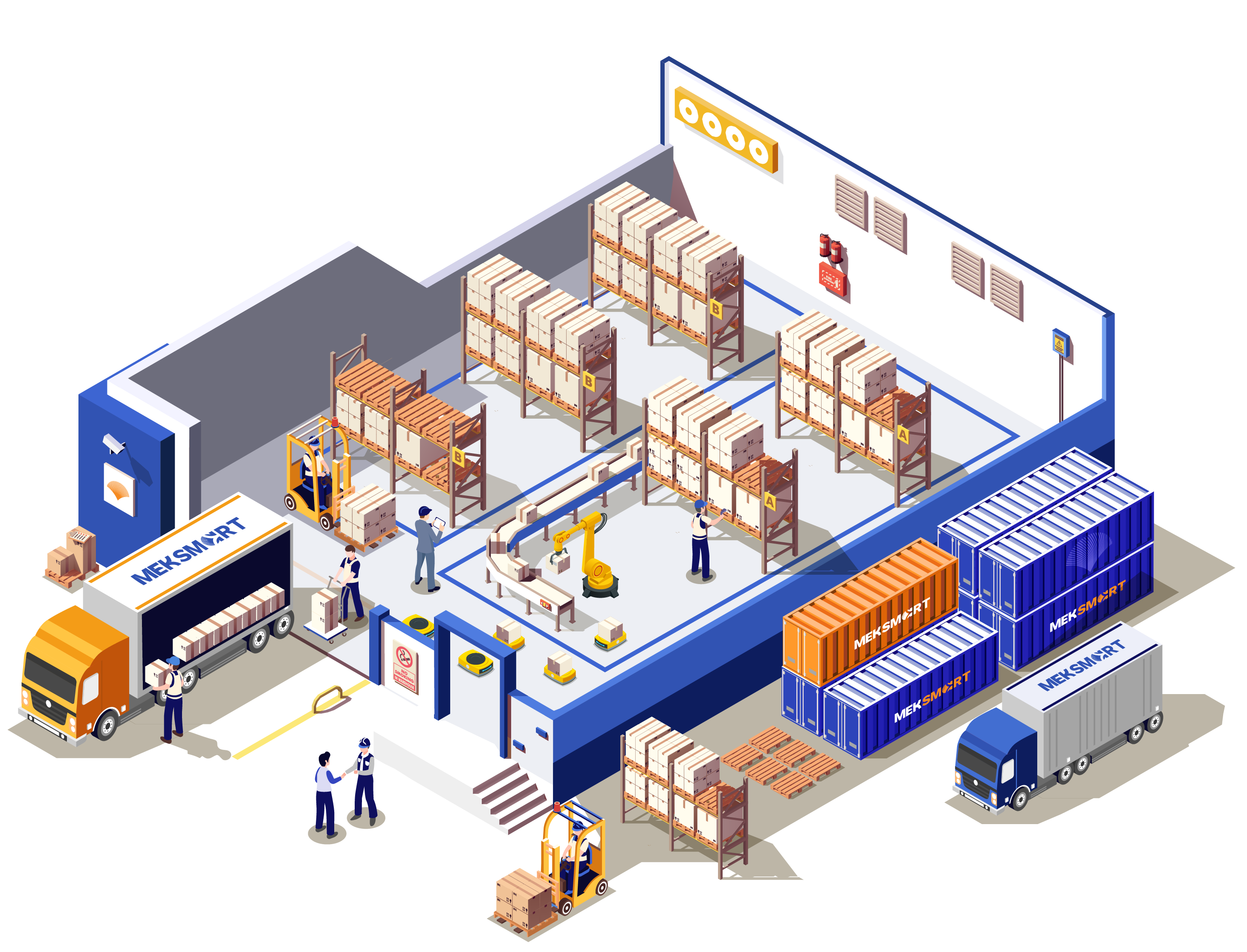MEKSMART
GENERAL NEWS
Author: Meker Meksmart
Update: 23/07/2025
SOLUTIONS FOR BUSINESSES TO MANAGE HOUSEHOLD INVENTORY BY PRODUCT ATTRIBUTE
The household goods industry is characterized by thousands of product codes with different sizes, materials, shapes and fragility levels. Household goods warehouse management not only requires optimizing storage space but also strictly controlling the properties of each product. In the context of fierce market competition, manual warehouse management methods are gradually revealing many limitations such as loss, data errors, and difficulty in retrieving goods. Therefore, the solution of using modern warehouse management software is an inevitable direction, helping businesses automate processes, control inventory according to product properties, minimize errors and improve operational efficiency.
So what is the optimal solution for businesses, let's find out with Meksmart through the following article.
1. Difficulties in warehouse management activities of household goods businesses
Household goods warehouse management activities face many specific challenges due to the diverse characteristics of types, sizes, materials and high import - export frequency. In particular, for businesses that still manage manually or with separate tools such as Excel, warehouse operation efficiency is easily affected. Some common difficulties include:
- Inaccurate inventory management: Household items can have up to thousands of product codes with complex attributes such as color, size, material, origin, etc., making manual inventory and control prone to errors, confusion or omission of important information.
- Complicated and difficult-to-control import and export procedures: Processing orders and moving goods without a support system leads to a lot of time spent searching for products, making it easy to make mistakes when recording quantity or status, affecting delivery progress and service quality.
- Unoptimized storage space: Manually arranging goods often does not take advantage of the height and depth of the warehouse, leading to wasted space. Some fragile and bulky products also require special arrangements, but the lack of analytical tools makes it difficult to organize the space scientifically.
- Risk of data loss and lack of transparency: Without a system to track the location and movement history of each product by attribute, businesses find it difficult to detect loss, and also have difficulty tracing the origin or checking inventory history.
- Lack of analysis and operational optimization capabilities: Data is not automatically aggregated and linked between departments, making it difficult for management to grasp warehouse performance, and there is no basis for making timely decisions on goods rotation or warehouse restructuring.

Difficulties in warehouse management of household goods businesses
2. Solutions to optimize accurate and flexible household goods warehouse management
For household goods businesses - where each product has many attributes such as size, color, model and manufacturer - warehouse management requires accuracy, flexibility and synchronization. Below are some effective household goods warehouse management solutions to help businesses operate optimally and improve supply chain performance:
1. Deploy a modern WMS warehouse management system
- WMS (Warehouse Management System) helps automate the entire storage, import and export process, thereby improving accuracy and minimizing errors.
- Meksmart's MEKWMS system integrates AI and IoT to help track real-time inventory, optimize warehouse space and operating capacity.
2. Applying barcode and RFID technology
- Barcode and RFID technology allows identification of each product, increases inventory speed, imports and exports, and reduces the risk of confusion.
- RFID helps to locate goods in the warehouse in real time, optimizing management for high-value products or products requiring special storage.
3. Optimize inventory management processes
- Apply appropriate inventory control methods such as FIFO (first in - first out), LIFO, FEFO to ensure product quality when leaving the warehouse.
- Periodic inventory and setting up inventory alerts help detect discrepancies in a timely manner, ensuring that goods are always ready for market demand.
4. Optimize warehouse storage space
- Choose multi-level shelves, mobile shelves, and logical goods arrangement diagrams to maximize warehouse space.
- Dividing storage areas according to product characteristics (bulky, fragile, requiring special storage, etc.) makes management and operation easier.
5. Integrating ERP into warehouse management system
- ERP helps businesses connect warehouse processes with other departments such as purchasing, sales, accounting and manufacturing.
- Data synchronization helps make quick decisions, reduce delays in the supply chain and optimize overall operating costs.
6. Control goods by serial number/lot number
- For household goods with many versions or attributes (model, color), managing by serial number or lot number helps trace the origin, manage warranty and track product life effectively.
- At the same time, it helps businesses accurately control storage period and handle old inventory scientifically.

Solution to optimize household goods warehouse management accurately and flexibly
3. MEKWMS | Household goods warehouse management solution by product attribute
In the household goods industry, strict control of the transportation and distribution process plays a key role in ensuring the efficiency of the supply chain. MEKTMS - the smart transportation management system developed by Meksmart helps businesses optimize operations thanks to its outstanding features:
- Optimizing transportation coordination: Automating the process of planning deliveries, allocating vehicles, optimizing transportation routes to increase fleet efficiency, reduce delivery time and save logistics costs.
- Real-time order management: MEKTMS allows tracking of the entire order processing process from reception to final delivery. The system integrates with ERP to help data be synchronized, transparent and continuously controlled in real time.
- Transparent financial control: Easily manage revenue for each order, track debts, schedule collection, update payment status and calculate working hours and driver costs accurately and automatically.
- Support quick decision making: With an automatic reporting system, detailed analysis of each operational indicator, MEKTMS helps managers grasp the actual situation, make quick and correct decisions in a fiercely competitive environment.

MEKWMS is a solution for managing household goods warehouses according to each product attribute
Effective household goods warehouse management is not only a key factor in minimizing loss and optimizing costs, but also plays a decisive role in ensuring service quality and improving customer experience. In the context of increasingly fierce competition, businesses need to transform strongly by applying modern technology solutions such as WMS software, ERP integration, RFID and automating warehouse operations.
Contact Meksmart now for free consultation and experience the smart warehouse management solution that best suits your business model.













